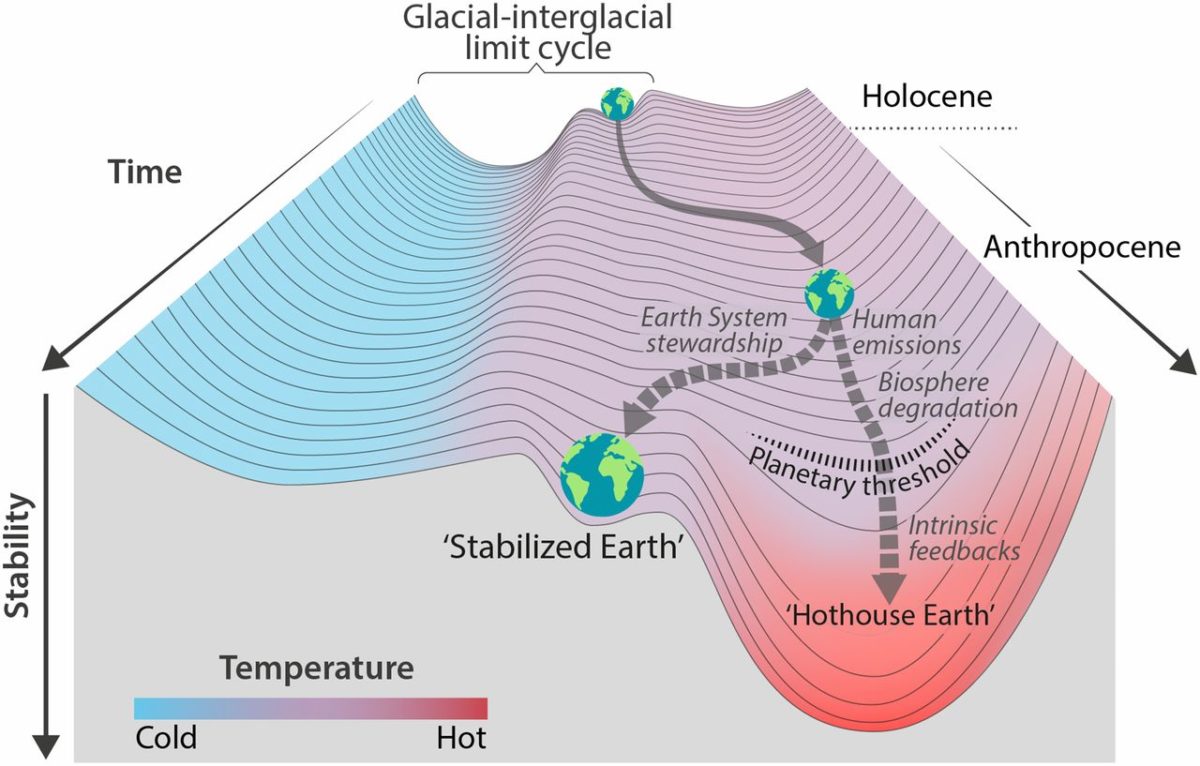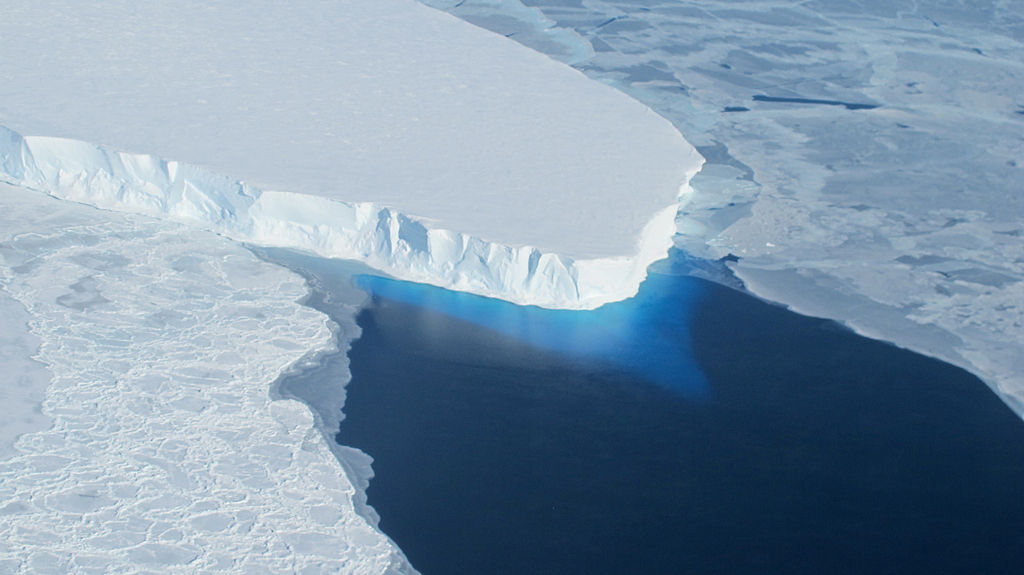Another step down the road to Earth’s Hothouse Hell and extinction

Part 2 of David Spratt’s guide-book to events along the road to Hothouse Hell: collapse of the West-Antarctic Ice Sheet
This post continues David Spratt’s account of how we humans seem to be passing critical tipping points in the dynamics of Earth’s Climate System initiating the positive feedbacks of runaway global warming to Earth’s Hothouse Hell. Steffen et al. described the dynamics and existential consequences of this process in their 2018 Proceedings of the National Academies of Science paper, Trajectories of the Earth System in the Anthropocene. The feature graphic above from that paper maps out alternative destinations we can reach from where we are now. There are two roads,
- a wide easy one leading to the cliff of no return, where we can no longer stop Earth’s runaway warming to global average temperatures 10 – 15 °C hotter than present that will be lethal to most species of complex organisms, and
- an already hard to reach path where we climb back up the hill through effective “stewardship” (Steffen et al’s word), and reverse the warming process to stabilize the climate system in a way that will give humans and what remains of a probably already tattered biosphere a long term future.
Thanks to the technologies we began developing in the Industrial Revolution we have fueled our endless competition with one-another to control our one world with the increasingly profligate burning of fossil carbon to increase greenhouse gas concentrations in the atmosphere. Rising temperatures are then initiating a variety of other temperature-related positive-feedback processes emitting more greenhouse gases or having other effects to increase the rate of temperate rise that has started us down the road to Earth’s Hothouse Hell.
When the positive feedback reaches a point where it can sustain further temperature increases, it can be said that it has passed a tipping point, that may begin a rapid cascade of further tipping points as described in Lenton et al’s 2019 comment paper in Nature, Climate tipping points — too risky to bet against. There is no evidence that anything other than a rapidly mobilized war effort by humans will be able to stop the cascade passing the point of no return to runaway warming and global mass extinction. If we want to leave a future to our children and grandchildren, we had better pay heed to the warning signs that Spratt is pointing out, and start mobilizing and acting now.

20 January 2022
Have tipping points already been passed for critical climate systems? (2) West Antarctica and the “doomsday” glacier
by David Spratt in Climate Code Red
Second in a series. Read 1 | 2 | 3 | 4 | 5
The Thwaites Glacier in West Antarctica has an eastern ice shelf 45 kilometres wide as it flows into the Amundsen Sea. On 13 December 2021, scientists announced that the ice shelf is likely to break apart in the next five years or so, resulting in a speeding up of the glacier’s flow and ice discharge, possibly heralding the collapse of the glacier itself, and triggering similar increases across the Amundsen Sea glaciers.
The researchers explain: “Over the last several years, satellite radar imagery shows many new fractures opening up… which like a growing crack in the windshield of a car [can] suddenly break apart into hundreds of panes of glass. We have mapped [the] pathway the fractures might take through the ice [and conclude] the final collapse of Thwaites Glacier’s last remaining ice shelf may be initiated … within as little as five years” (emphasis added).
…
The fracturing of the ice shelf means more warm water will penetrate under the ice sheet, helping to free the underbelly of the glacier from the grounding line rock underneath, and allowing water to flow into the deep basin under the glacier, causing the glacier’s collapse. This would raise sea levels by 65 centimetres, though the timing of such collapse — the “doomsday” scenario — is highly uncertain. Since neighbouring glaciers flow into the same basin, the demise of Thwaites could eventually lead to the loss of all of the West Antarctic Ice Sheet (WAIS), resulting in more than three metres of sea level rise, and putting at risk the lives and livelihoods of 250 million people.
Read the complete article…
There is no doubt that observable and understandable evidence from the real world that Spratt, I and others point out is telling us that we are on the road to Earth’s Hothouse Hell and the current climate emergency is already dire and getting worse. In the face of this truly existential crisis, Australia is governed by Captain Humbug’s LNP COALition. Based on watching and listening to them in action, they are a troop of wooden-headed puppets, charlatans, knaves and pathological liars.
Their COALition’s focus in Parliament seems to be protecting the special interests of their patrons in the greenhouse-gas emitting fossil fuel industries and related exploiters of Australia’s resources. Beginning with the holier than thou Abbott and currently led by Capt. Humbug (Scotty from marketing) and Blarney Bulldust (the man with the hat), as long as the COALition has been in government, their constant flow of humbug, legislative blocking, denial, disinformation, disruption, distraction etc., has effectively protected their patrons by stifling the mobilization of any real action on the climate emergency (e.g.., stopping GHG emissions cold).
Vote Climate One understands and accepts the real world evidence that humanity faces a genuinely existential crisis: we’ll soon become extinct if we do not stop and reverse global warming. Our group was formed with the single goal – to create some hope for the future by helping the Australian people remove Capt. Humbug and his nasty and evil troop from our Federal Parliament by replacing the puppets and knaves with honest parties and individuals who have convinced us that they can be trusted to place acting on climate change as their first order of business in Parliament.
Our Traffic Light Voting System explains how we can help you do this without telling you how to vote.